グンナー ヨハンセン「三次元の運動知覚」
- 字幕の日本語訳 -
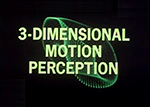
A Houghton Mifflin Production
copyright©︎1971 by Houghton Mifflin Company
A Teaching Resource
At the Frontier of Psychological Inquiry
3-Dimentional Motion Perception
Dr.James B. Maas Department of Psychology Cornel University
In collaboration with
Dr. Gunnar Johanssen
Dr. Gunnar Jansson
Mr. Sverker Runeson
Department of Psychology
Uppsala University
Uppsala, Sweden
copyright©︎1971 by Houghton Mifflin Company
A Teaching Resource
At the Frontier of Psychological Inquiry
3-Dimentional Motion Perception
Dr.James B. Maas Department of Psychology Cornel University
In collaboration with
Dr. Gunnar Johanssen
Dr. Gunnar Jansson
Mr. Sverker Runeson
Department of Psychology
Uppsala University
Uppsala, Sweden
ホートン ミフリン制作
著作権©︎1971 ホートン ミフリン社
教育リソース
心理学研究の最前線
2 次元運動知覚
ジェームズ B. マース博士 コーネル大学心理学部
協力
グンナー ヨハンセン博士
グンナー ヤンソン博士
スヴェルカー ルネソン氏
心理学部
ウプサラ大学
ウプサラ、スウェーデン
著作権©︎1971 ホートン ミフリン社
教育リソース
心理学研究の最前線
2 次元運動知覚
ジェームズ B. マース博士 コーネル大学心理学部
協力
グンナー ヨハンセン博士
グンナー ヤンソン博士
スヴェルカー ルネソン氏
心理学部
ウプサラ大学
ウプサラ、スウェーデン
ー 0:29 ー

Here at the University of Upsala in upsala Sweden, dr. Gunnar Johanssen and his colleagues have been studying the nature of three-dimensional motion perception.
Professor Johansen
Professor Johansen
ここ、スウェーデンのウプサラ大学心理学部では、グンナー・ヨハンセン博士とその同僚たちが、、三次元運動知覚の性質を研究してきました。
ヨハンセン教授です。
ヨハンセン教授です。
ー 0:42 ー
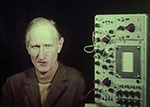
This film will show you some experiments on the three-dimensional motion perception that is perception of motion of different kinds and in different directions in a three-dimensional space.
For these experiments, we have in most cases used the oscilloscope but also have used computer and some more or less conventional methods for signal generation.
For these experiments, we have in most cases used the oscilloscope but also have used computer and some more or less conventional methods for signal generation.
この映像では、3 次元的動きの知覚に関するいくつかの実験を紹介します。
それは三次元空間でのさまざまな種類の運動とさまざまな方向の運動を知覚させます。
これらの実験のために、私たちはほとんどの場合オシロスコープを使用しましたが、コンピューターや比較的昔ながらの方法も信号生成のために使用しています。
それは三次元空間でのさまざまな種類の運動とさまざまな方向の運動を知覚させます。
これらの実験のために、私たちはほとんどの場合オシロスコープを使用しましたが、コンピューターや比較的昔ながらの方法も信号生成のために使用しています。
ー 1:13 ー
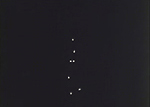
The perception of space and motion is traditionally divided into two dimensional and three dimensional perception.
Something seen is happening on a frontal plane is called 2-dimensional.
Something seen is happening on a frontal plane is called 2-dimensional.
空間と動きの知覚は、伝統的に二次元的知覚と三次元的知覚に分けられます。
目の前の平面上で展開しているように見えるものは二次元的と呼ばれます。
目の前の平面上で展開しているように見えるものは二次元的と呼ばれます。
ー 1:29 ー
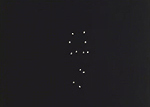
3-dimensional perception has a depth dimension.
The distinction between two dimensional and three dimensional perception is primarily made for pedagogical reasons.
The two kinds of motion perception basically follow the same laws.
The distinction between two dimensional and three dimensional perception is primarily made for pedagogical reasons.
The two kinds of motion perception basically follow the same laws.
三次元的知覚には奥行きの次元があります。
二次元的知覚と 三次元的の知覚の区別は、主に教育上の理由から行われます。
2 種類の動きの知覚は、基本的には同じ法則に従います。
二次元的知覚と 三次元的の知覚の区別は、主に教育上の理由から行われます。
2 種類の動きの知覚は、基本的には同じ法則に従います。
ー 1:58 ー
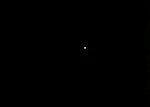
To ascertain the laws for motion perception, one begins by studying very simple motions.
We will show effects of changes in points lines and surfaces.
A motion pattern like this one is ambiguous.
It may be perceived as either a motion in depth or in a frontal plane.
We will show effects of changes in points lines and surfaces.
A motion pattern like this one is ambiguous.
It may be perceived as either a motion in depth or in a frontal plane.
動きの知覚に関する法則を明らかにするためには、まず非常に単純な動きを研究することから始めます。
点、線、面の変化による効果を紹介しましょう。
このような動きのパターンは曖昧です。
これは奥行きのある動きとしても、平面上の動きとしても知覚される可能性があります。
点、線、面の変化による効果を紹介しましょう。
このような動きのパターンは曖昧です。
これは奥行きのある動きとしても、平面上の動きとしても知覚される可能性があります。
ー 2:19 ー
If another motion component is added the perceived motion in depth is strengthened but there still may be ambiguity.
別の動きの要素が追加されると、奥行きの動きとしての知覚が強化されますが、まだ曖昧さが残るかもしれません。
ー 2:35 ー
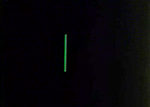
Let us now see what happens when we have a line in motion instead of a point.
If the length of the line does not change, there is no perceived motion in depth.
A change of the length of a stationary line is ambiguous.
If the length of the line does not change, there is no perceived motion in depth.
A change of the length of a stationary line is ambiguous.
では、点ではなく線が動いているときに何が起こるかを見てみましょう。
線の長さが変わらなければ、奥行きの動きは知覚されません。
静止している線の長さが変化しても(奥行きの知覚は)曖昧です。
線の長さが変わらなければ、奥行きの動きは知覚されません。
静止している線の長さが変化しても(奥行きの知覚は)曖昧です。
ー 3:03 ー
But a combination of horizontal motion and change of length is perceived as a clear motion in depth.
The addition of more stimulus changes has decreased the ambiguity of the percept.
The addition of more stimulus changes has decreased the ambiguity of the percept.
しかし、水平方向の動きと長さの変化の組み合わせは、明らかに奥行きのある動きとして知覚されます。
刺激の変化がさらに加わることで、知覚の曖昧さが減少しました。
刺激の変化がさらに加わることで、知覚の曖昧さが減少しました。
ー 3:24 ー
A different phase relation between the two changes causes yet another motion path to be seen.
ふたつの変化の位相関係が異なると、さらに別の動きの道すじが見えるようになります。
ー 3:47 ー
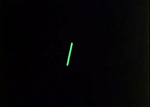
Change of direction combined with change of length is perceived as motion in depth.
(線の)方向の変化と長さの変化の組み合わせは、奥行きのある動きとして知覚されます。
ー 4:10 ー
Let us now see how changes of unstructured surfaces are perceived.
A one-dimensional change of a surface is ambiguous.
A one-dimensional change of a surface is ambiguous.
次に、構造化されていない面の変化がどのように知覚されるかを見てみましょう。
(縦方向のみの)ひとつの次元での面の変化では(奥行き感は)曖昧です。
(縦方向のみの)ひとつの次元での面の変化では(奥行き感は)曖昧です。
ー 4:25 ー
But a two-dimensional change is always perceived as motion in depth.
しかし、(縦方向と横方向という)ふたつの次元での変化は、常に奥行きのある動きとして知覚されます。
ー 4:51 ー
Proportionately unequal changes in the two dimensions are perceived as a combination of rectilinear motion in depth and rotary motion or form change.
(縦方向と横方向の)ふたつの次元での等しくない変化は、奥行きの直線運動に加えて、回転運動または形の変化の組み合わせとして知覚されます。
ー 5:09 ー
A phase difference between the two changes does not destroy the main effect.
ふたつの変化の位相差(縦横の長さの変化のタイミング)によって主な効果が損なわれることはありません。
ー 5:27 ー
Nor does a frequency difference destroy the main effect.
All these examples demonstrate a perceptual preference for seeing rigid objects.
All these examples demonstrate a perceptual preference for seeing rigid objects.
また、頻度の違い(縦横の長さがいろいろ変わる)も主要な効果を破壊しません。
これらすべての例は、物体を剛体として見ることに対する知覚の優先性を示しています。
これらすべての例は、物体を剛体として見ることに対する知覚の優先性を示しています。
ー 5:55 ー
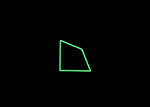
Even when it is theoretically impossible to obtain a completely rigid object, some constancy is retained.
Here in the form of a bending object.
Such bending is still seen even when the corner passes the diagonal of the original square.
Here in the form of a bending object.
Such bending is still seen even when the corner passes the diagonal of the original square.
完全に物体の剛体性を得ることが理論的に不可能な場合でも、ある程度の不変性が保たれます。
ここでは、曲がる物体として(不変性が)保たれています。
このような曲がり(の現象)は、角(かど)が元の正方形の対角線を越えた場合でも見られます。
ここでは、曲がる物体として(不変性が)保たれています。
このような曲がり(の現象)は、角(かど)が元の正方形の対角線を越えた場合でも見られます。
ー 6:30 ー
A change of size together with the motion of the corner results in a perception of simultaneous motion in depth.
角(かど)の動きとともにサイズが変化すると、奥の方へも同時に動いているように知覚されます。
ー 6:53 ー
Here are some similar but more complex cases.
Observe the strong depth effect with twisting and rotation.
Observe the strong depth effect with twisting and rotation.
ここでは、類似していますが、より複雑な(動きの)ケースを紹介します。
ねじれと回転を伴った、強い奥行きの効果をご覧ください。
ねじれと回転を伴った、強い奥行きの効果をご覧ください。
ー 7:22 ー
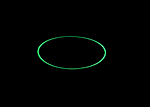
The quadrangular form is not essential.
The same basic rules apply to other forms.
Here exemplified by ellipses, equal changes in two dimensions are perceived as rectilinear motion in depth.
The same basic rules apply to other forms.
Here exemplified by ellipses, equal changes in two dimensions are perceived as rectilinear motion in depth.
四角形という形態は、必ずしも必要ではありません。
他の形状にも同じ基本ルールが当てはまります。
ここでは楕円を例に挙げていますが、二次元(縦方向と横方向)での等しい変化は、奥行きへの直線的な動きとして知覚されます。
他の形状にも同じ基本ルールが当てはまります。
ここでは楕円を例に挙げていますが、二次元(縦方向と横方向)での等しい変化は、奥行きへの直線的な動きとして知覚されます。
ー 7:39 ー
Unequal changes can be seen as rotation and/or form change.
(二次元での)不均等な変化は、回転や形状の変化として知覚されます。
ー 7:59 ー
Simultaneous displacement of the whole pattern makes the perceived motion track more complex and the figure more like a real object in motion.
パターン全体を同時に移動させると、認識される動きの軌跡がより複雑になり、図形は実際の物体の動きに近くなります。
ー 8:21 ー
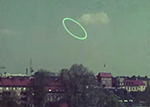
The background has no effect on the type of perceived motion, but affects the absolute size of the perceived object.
背景は知覚される動きの種類には影響を与えませんが、知覚される物体の絶対的な大きさには影響を与えます。
ー 8:43 ー
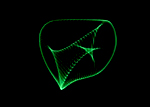
However experience plays no decisive role.
This strange and highly complex composition of moving lines hardly resembles anything you have seen before.
It is produced on a two-dimensional screen but is always seen as a three-dimensional object that is moving and changing shape at the same time.
This strange and highly complex composition of moving lines hardly resembles anything you have seen before.
It is produced on a two-dimensional screen but is always seen as a three-dimensional object that is moving and changing shape at the same time.
しかし、経験は決定的な役割を果たしません。
この奇妙で非常に複雑な動く線の構成は、これまで見たこともないものです。
これは二次元のスクリーン上に生成されていますが、常に動きながら形を変える三次元の物体のように見えます。
この奇妙で非常に複雑な動く線の構成は、これまで見たこともないものです。
これは二次元のスクリーン上に生成されていますが、常に動きながら形を変える三次元の物体のように見えます。
ー 9:07 ー
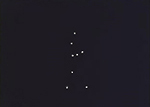
Complex patterns of motions combine very rapidly and spontaneously to unite.
Watch here.
Watch here.
複雑な動きのパターンは、非常に速く、自発的に結合して一体化します。
これを見てください。
これを見てください。
ー 9:17 ー
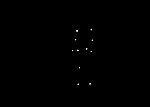
These were exposures of one second.
Watch again.
Watch again.
これらは1秒間の露出でした。
Watch again. もう一度見てください。。
Watch again. もう一度見てください。。
ー 9:33 ー
These exposures were half a second.
Be ready for still shorter exposures.
Watch for the direction of motion.
Be ready for still shorter exposures.
Watch for the direction of motion.
これらの露出は 0.5 秒でした。
つぎは、さらに短い露出になります。
動きの方向に注目してください。
つぎは、さらに短い露出になります。
動きの方向に注目してください。
ー 9:52 ー
The last exposures were a quarter of a second.
Rapid spontaneous organization is a basic fact in motion perception.
Rapid spontaneous organization is a basic fact in motion perception.
最後の露出は4分の1秒でした。
迅速な自発的組織化は、動きの知覚における基本的な事実です。
迅速な自発的組織化は、動きの知覚における基本的な事実です。